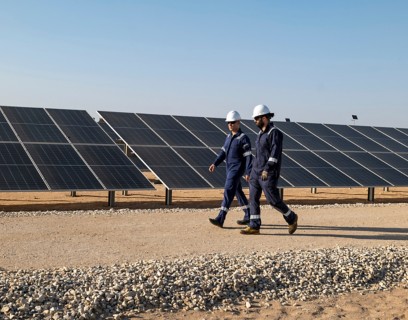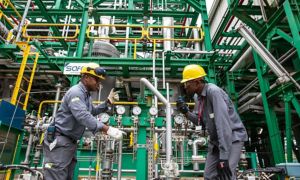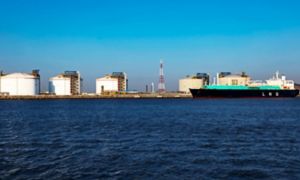
Or , our new artificial intelligence tool.
MyEni Login
- ACCESSIBLE ENERGY
The LNG breakthrough: the benefits (episode 2)
The second of three episodes dedicated to the evolution of natural gas, a key vector for the energy transition.

The first investments in Liquefied Natural Gas (LNG) technologies date back to the 1970s, but it is only in the last decade that a real globalisation of the gas market was triggered due to this possibility of affordable sea transportation.
LNG actually offers clear benefits in terms of safety and flexibility. The gas market is no longer tied to the continuity and operation of fixed pipeline networks and recompression stations, which often cross countries and regions and come with potential geographic and political complexities, but, it becomes more fluid and dynamic through the movement by sea, through the use of ships. And, transport costs become cheaper on longer routes, offering higher marketing opportunities for producing countries and supply opportunities for consuming countries.
The benefits of LNG
The technology of liquefaction of natural gas, which takes place by bringing it to temperatures lower than -161.4 °C, makes it possible to reduce the specific volume of the gas by about 600 times compared to standard conditions, allowing for competitive costs for storage and transport in considerably smaller spaces. LNG is transported by sea by means of LNG carriers, where the temperature in the liquid phase at pressure is close to atmospheric, but at cryogenic temperatures.
The flexibility offered by ship transport also makes it possible to reach remote areas by intercepting price variations between different markets.


LNG: energy over long distances
According to the latest IEA report, the main net importers of liquefied natural gas (LNG) are concentrated in Asia, with some variations from previous years. Japan remains the world’s largest importer of LNG, with volumes rising slightly in 2025 (+2.5%) due to electricity demand, despite higher nuclear availability. China declined 21% in the first half and 11% year-on-year, reflecting increased pipeline flows from Russia, from less industrial development and higher winter temperatures. South Korea maintained stable volumes at 2%. In Europe, with France among the main entry points, LNG imports grew by 25% in the first half of the year and by 26% year-on-year (around 35 billion m³), offsetting the decline in Russian flows. Taiwan was the only Asian market to see growth (+12%, approximately 2 billion m³) following the closure of its last nuclear reactor, while India reduced its imports by 8%.
The United States consolidated its world leadership, with exports growing by 21% in the first half of 2025 thanks to the new Plaquemines and Corpus Christi Stage 3 plants. The North American region as a whole recorded an increase of 27% (+32 billion m³). Global LNG supply is expected to increase by 5.5% (30 billion m³), driven by North American projects. Australia maintained stable production, while Qatar showed moderate growth. Russia, Malaysia and Nigeria recorded little change, while development plans continued in Mozambique, Tanzania and Canada.
The author: Luca Longo
An industrial chemist specialising in theoretical chemistry. He was a researcher for 30 years before moving into science communication at Eni.
Natural gas in Eni's strategy
Thanks to its flexibility and accessibility, gas is a significant aid in the decarbonization process.



















